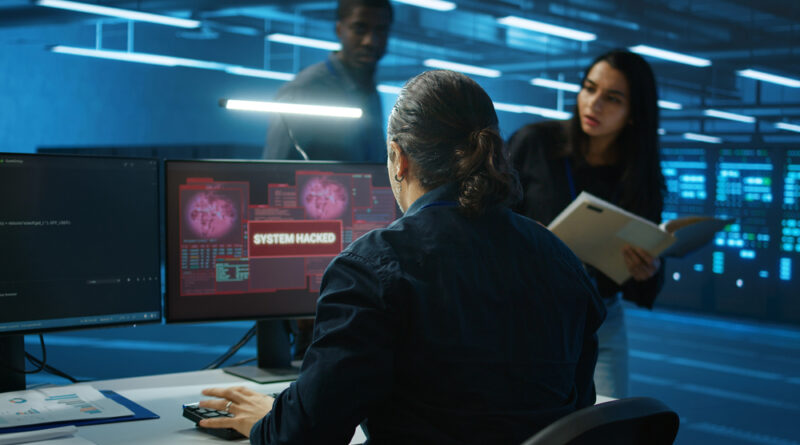AI, Platforms, and the New Frontiers: Key Cybersecurity Trends from RSA Conference 2025
San Francisco – As more than 45,000 cybersecurity professionals descended on the Moscone Center for the RSA Conference 2025, one message rang loud and clear: cybersecurity is evolving — rapidly, broadly, and irreversibly. This year’s flagship industry gathering spotlighted a wave of transformative shifts, with artificial intelligence, platformization, and industrial system security leading the charge.
The convergence of cyber defense and business strategy has never been more urgent. From protecting autonomous AI agents to embedding security into core infrastructure, the conference laid out a future where digital resilience is no longer optional — it’s foundational.
AI’s Triple Role: Protector, Protected, and Predator
Artificial intelligence dominated the RSA agenda, but its role has grown multifaceted — both a defender and a threat, and increasingly, a critical asset to be secured.
Protecting Enterprise AI:
As businesses deploy agentic AI — autonomous systems that schedule meetings, write code, and make decisions — new attack surfaces are emerging. These AI agents, embedded in workflows and accessing sensitive data, now require the same level of security as traditional endpoints.
Vendors are racing to meet this need. IBM’s watsonx and CrowdStrike’s Falcon Identity Protection are leading enterprise governance and identity management for AI systems. Palo Alto Networks launched Prisma AIRS and announced plans to acquire Protect AI, doubling down on AI workload security. Startups like CalypsoAI, MIND, and Cyberhaven are also gaining traction, focusing on everything from model safety to AI tool usage monitoring.
AI as a Defender:
AI is also enhancing the capabilities of security teams. New systems now simulate the judgment of human analysts at scale, managing billions of events in real time. SentinelOne’s Purple AI Athena and Palo Alto’s upgraded Charlotte AI exemplify the shift, introducing intelligent triage, autonomous policy enforcement, and predictive threat analysis.
AI-Driven Attacks:
Perhaps most concerning is AI’s weaponisation. Threat actors are leveraging it to generate phishing attacks, produce deepfakes, and exploit vulnerabilities with surgical precision. The accessibility of AI-driven cybercrime is turning amateurs into advanced attackers overnight. While dedicated defences are still evolving, virtually every company at RSA acknowledged this threat as a new front in the cybersecurity arms race.
Platformization: Cybersecurity Goes Big
The conference also revealed a major architectural shift in the way companies manage security: platformization.
Once siloed tools are now being unified into end-to-end platforms. Companies like Palo Alto Networks, CrowdStrike, and SentinelOne are consolidating network, endpoint, and identity protection under single dashboards — enabling seamless visibility, faster threat detection, and streamlined licensing. Industry giants like Microsoft, Cisco, and Googleare also adopting platform-first strategies, signalling a long-term pivot toward integrated, scalable security ecosystems.
Embedded Security: Protection Enters the Data Path
Gone are the days of perimeter-only protection. The latest trend is in-line security — embedding protection mechanisms directly into the flow of data.
NetApp, IBM, and Pure Storage are reimagining how data is defended by integrating real-time malware scanning and immutable snapshots into their storage systems. Infinidat stood out at RSA for offering financial guarantees tied to its ransomware recovery solutions, a bold move that redefines confidence in post-attack data restoration.
The concept is simple but revolutionary: rather than scanning for threats after the fact, data is continuously monitored as it’s accessed or moved, enabling instantaneous responses and prevention.
Operational Technology: The Physical-Digital Battleground
Perhaps the most urgent conversation surrounded the growing threats to Operational Technology (OT) — the hardware and software systems running power grids, transport networks, and manufacturing plants.
Once protected by air gaps, these systems are now connected to corporate networks and the internet, expanding their attack surfaces exponentially. Attacks here don’t just steal data — they can halt production, damage physical assets, or even endanger lives.
Securing OT requires new approaches:
-
Asset visibility tools to discover all devices on industrial networks.
-
OT-specific protection platforms such as TXOne Networks’ Stellar, which uses AI and zero-trust segmentation.
-
Advanced segmentation and supply chain security to isolate critical systems.
Cisco launched its Industrial Threat Platform at RSA, integrating real-time OT threat intelligence and firewall protection tailored for industrial zones — a clear sign that the mainstream cybersecurity industry is now taking physical infrastructure threats seriously.
The Future Is Integrated, Intelligent, and Industrial
The 2025 RSA Conference cemented a vision of cybersecurity that is proactive, integrated, and deeply embedded into every layer of digital and operational infrastructure.
AI’s complex role as protector, asset, and attacker is redefining how organisations must build their defences. Platformization is streamlining operations while improving response times. Embedded and real-time data protection is replacing reactive methods. And the once-ignored world of industrial systems is now a critical — and vulnerable — security frontier.
In today’s hyper-connected environment, cybersecurity is no longer the domain of IT alone. It’s a boardroom imperative, a growth enabler, and a core pillar of modern business resilience.
Photo Credit: DepositPhotos.com

